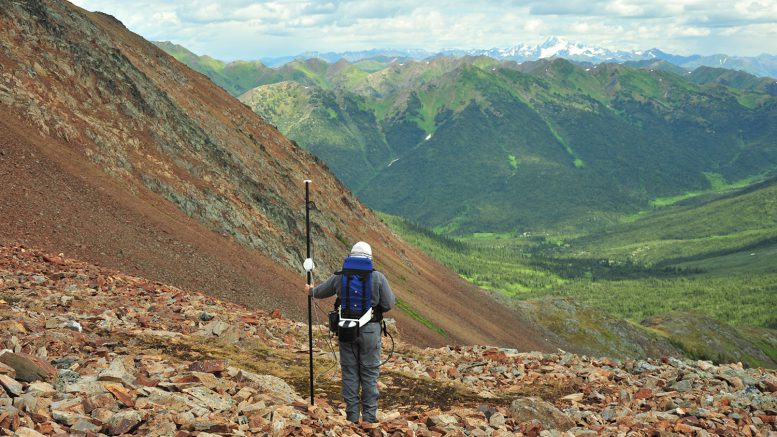The most recent results from the Valley zone at Snowline Gold’s (CSE: SGD) Rogue project in the Yukon — 363.5 metres of 1.4 grams gold per tonne from surface in hole V22-28 — are good. But CEO and cofounder Scott Berdahl says the hole is probably only in the top five of best results since Valley’s discovery in 2021.
The project, in the underexplored Selwyn Basin, has attracted attention by returning higher grades than similar reduced intrusion related gold deposits in the region, such as Kinross Gold’s (TSX: K; NYSE: KGC) Fort Knox mine in Alaska and Victoria Gold’s Eagle to the west, while so far demonstrating the potential for the same continuity.
“I guess our best hole was 319 metres at 2.5 grams per tonne. The upper 108 metres of that hole were 4.14 grams per tonne,” says Berdahl, referring to hole V22-10 released last October.
“And these are really consistent grades,” he says, noting that in the 108-metre high grade section, 72% of the assays were above 2 grams, with only five samples below a gram.
“It’s really consistent mineralization, which we really like to see near surface, and really just atypical of this type of gold system in terms of being that high grade.”
The importance of hole 28, released on Friday and drilled 121 metres from the nearest hole (V22-14, which cut 285.2 metres of 1.45 grams gold) is that it tested the system from the opposite side, Berdahl says. “It demonstrates that we’re not just drilling down structures or getting lucky in the guts of a system — it demonstrates a continuity between previous holes by coming at it from the other direction.”
The hole, which was drilled on the western margin of the Valley intrusion, and just below and to the west of higher-grade mineralization, also returned 42.3 metres of 2.15 grams gold and 129.9 metres of 2.03 grams gold. Assay results from holes V22-19 and V22-20, also released today, cut lower grade mineralization (0.37 gram gold over 201.5 metres from 127 metres downhole and 443.5 metres of 0.25 gram gold from bedrock surface at 7.5 metres, respectively).
Mineralization at the Valley zone has so far been confirmed over a 720-metre corridor, at widths of up to 400 metres plus. Berdahl says grades appear to drop off below 200 or 300 metres depth, but mineralization continues to at least 500-600 metres depth. Gold is hosted in sheeted, low-sulphide quartz veins, with a large central zone within the broader Valley intrusion carrying higher vein densities.
Berdahl believes the unexpectedly high grades associated with Valley could spark a “mini gold rush” in terms of reevaluating reduced intrusion related gold systems. Fort Knox, which began production with a head grade of under 1 gram gold per tonne, was considered the kind of defining deposit of this type.
“That’s been kind of the model like these reduced intrusion related gold systems — they’re big, they’re continuous, but they have low grades,” he says. “It’s that continuity and the size and the metallurgy that make them work.”
But at Valley, Berdahl says the grades are “far in excess” of what the company had expected. “So that really does change the equation for this deposit model.”
Assays are pending for about 26% of the 13,320 metres Snowline drilled last year at Valley and Gracie, another target at Rogue. Snowline controls 1,370 sq. km of ground across its flagship Rogue and Einarson projects in the Yukon and is planning at least 15,000 metres of drilling this year. Its seasonal camp at Rogue will open in May and close in October.
Snowline Gold shares traded at $2.38 this afternoon in Toronto with a 52-week window of 66¢ and $4.10. The junior has a market capitalization of $314.5 million.


Be the first to comment on "Why Snowline Gold’s Rogue project could ‘change the equation’ for Fort Knox style deposits "